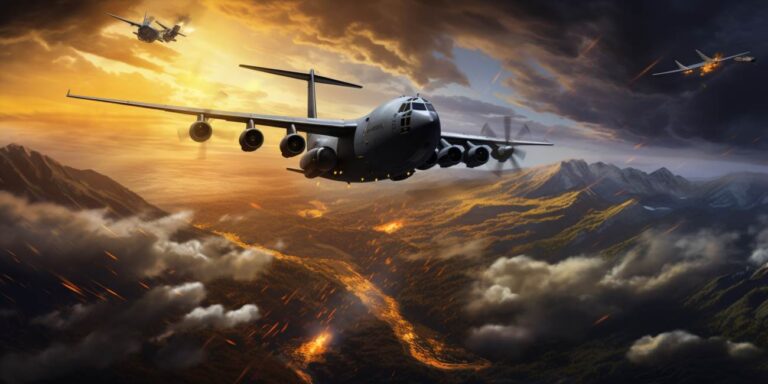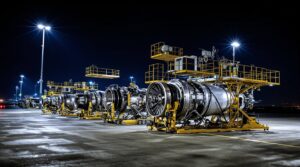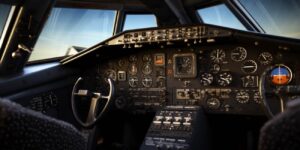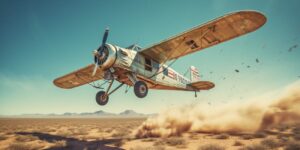At the forefront of the Army’s air power are the UH-60 Black Hawk and AH-64 Apache helicopters, revered for their versatility and combat prowess. The Apache, often described as an airborne tank, boasts impressive firepower, including AGM-114 Hellfire missiles, making it a formidable asset for close air support missions.
The CH-47 Chinook is another vital component in the Army’s helicopter arsenal, renowned for its heavy-lift capabilities. This twin-engine tandem rotor helicopter plays a crucial role in transporting troops and heavy equipment, ensuring rapid deployment across the battlefield.
Turning attention to fixed-wing aircraft, the C-12 Huron stands out as a versatile utility plane used for various roles, including transport, reconnaissance, and liaison. With a range of over 2,000 miles, the C-12 provides the Army with reliable mobility and flexibility.
In the intelligence, surveillance, and reconnaissance (ISR) domain, the MQ-1C Gray Eagle unmanned aircraft system takes center stage. Capable of carrying AGM-114 Hellfire missiles and equipped with advanced sensors, the Gray Eagle is an invaluable asset for gathering critical information while maintaining a lethal edge.
For fixed-wing close air support, the A-10 Thunderbolt II, affectionately known as the “Warthog,” is a legendary presence. Armed with a powerful GAU-8 Avenger Gatling gun and designed for durability, the A-10 provides effective ground support, earning its place as a beloved and effective component of the Army’s aviation fleet.
Enhancing the Army’s aviation capabilities are UAVs (Unmanned Aerial Vehicles) such as the RQ-7 Shadow. These UAVs are instrumental in reconnaissance, surveillance, and target acquisition, offering a stealthy and persistent eye in the sky.
Us army helicopters models and capabilities
The US Army boasts a formidable fleet of helicopters, each model designed for specific missions, showcasing a blend of versatility and cutting-edge technology.
One of the most iconic helicopters in the US Army’s arsenal is the UH-60 Black Hawk. This medium-lift utility helicopter serves as a workhorse, excelling in troop transport, medical evacuation, and logistics support. Its multi-mission capabilities make it a cornerstone in various operations.
For more specialized tasks, the Apache AH-64 takes the spotlight. Renowned for its attack capabilities, this formidable rotorcraft is equipped with advanced avionics and weaponry, enabling it to engage and neutralize armored vehicles, as well as provide close air support to ground forces.
The CH-47 Chinook, a heavy-lift transport helicopter, is a critical asset for the Army’s air assault, artillery, and battlefield resupply operations. Its unique tandem rotor design allows for exceptional lift and stability, making it an invaluable component in the Army’s logistical framework.
Adding a touch of innovation, the RAH-66 Comanche, though canceled in the early 2000s, deserves mention. It was envisioned as a stealthy reconnaissance and light attack helicopter, incorporating cutting-edge technologies to operate in contested environments.
When it comes to Unmanned Aircraft Systems (UAS), the RQ-7 Shadow stands out. This surveillance drone plays a crucial role in intelligence gathering, reconnaissance, and target acquisition, providing real-time information to enhance situational awareness.
Table:
| Helicopter Model | Primary Role | Key Capabilities |
|---|---|---|
| UH-60 Black Hawk | Utility/Transport | Troop transport, MedEvac, Logistics support |
| Apache AH-64 | Attack | Anti-armor, Close air support |
| CH-47 Chinook | Heavy-lift Transport | Air assault, Artillery support, Battlefield resupply |
| RAH-66 Comanche | Reconnaissance/Attack (Canceled) | Stealth, Advanced reconnaissance |
| RQ-7 Shadow | Unmanned Surveillance | Intelligence gathering, Reconnaissance |
The US Army’s helicopter fleet is a testament to its commitment to staying at the forefront of military aviation, ensuring a diverse range of capabilities to address the dynamic challenges of modern warfare.
Fixed-wing aircraft used by us army details
The United States Army employs a diverse fleet of fixed-wing aircraft, each designed for specific roles and missions. These aerial workhorses play a crucial role in providing the Army with strategic mobility, reconnaissance capabilities, and close air support. Let’s delve into the details of some of the key fixed-wing aircraft used by the U.S. Army.
One of the noteworthy aircraft in the Army’s arsenal is the C-12 Huron, a versatile twin-engine turboprop used for transport, reconnaissance, and medical evacuation. Its adaptability makes it an invaluable asset, supporting a range of missions and enhancing the Army’s operational flexibility. The C-12’s fixed-wing design enables it to swiftly navigate diverse terrains, making it an ideal choice for both tactical and strategic airlift operations.
For aerial intelligence, surveillance, and reconnaissance (ISR) missions, the Army relies on the RC-12 Guardrail. This specially configured fixed-wing aircraft is equipped with advanced sensor suites, providing real-time data to support decision-making on the battlefield. The Guardrail’s sophisticated capabilities enhance the Army’s situational awareness and contribute to effective mission planning.
Close air support is a critical function, and the Army accomplishes this with the A-10 Thunderbolt II, affectionately known as the “Warthog.” This formidable fixed-wing aircraft is designed for combat near the front lines, equipped with a powerful 30mm GAU-8 Avenger cannon and capable of carrying a variety of munitions. The A-10’s rugged design and ability to loiter over the battlefield make it a reliable asset for supporting ground forces.
The details of the fixed-wing aircraft used by the U.S. Army extend beyond combat roles. The C-37A Gulfstream V serves as a vital VIP transport, facilitating the efficient travel of high-ranking officials. Its long-range capabilities and luxurious interior make it a preferred choice for diplomatic and executive missions, underlining the versatile nature of the Army’s fixed-wing fleet.
Historic and modern us army planes list
The world of military aviation is a captivating journey through time, blending the historic legacy of iconic aircraft with the cutting-edge technology of modern warplanes. This dynamic evolution showcases the prowess and innovation of the United States Army in the realm of aerial dominance. Let’s embark on a riveting exploration of some key players in this airborne saga.
Beginning our journey with historic marvels, the Curtiss Jenny stands tall as a symbol of the early days of military aviation. Introduced during World War I, this biplane was a workhorse, serving in various roles from reconnaissance to training. Its distinct design and open cockpit are etched in the annals of aviation history.
Fast forward to World War II, and the Boeing B-17 Flying Fortress emerges as an epitome of strategic bombing. Its historic significance lies in its robust design and the ability to endure extensive combat damage. The “Flying Fortress” played a pivotal role in shaping the outcome of the war.
Transitioning to the modern era, the Lockheed Martin F-35 Lightning II takes center stage. A multi-role stealth fighter, this marvel of modern engineering integrates advanced avionics and versatility. Its capability to operate from land and sea, coupled with impressive sensor fusion, cements its status as a cornerstone of modern air power.
Adding to the modern fleet is the Boeing AH-64 Apache, a formidable attack helicopter. With a sleek design and cutting-edge weaponry, the Apache has become synonymous with aerial firepower. Its role in anti-tank warfare and close air support showcases the adaptability required in modern military operations.
As we compile this eclectic list of aircraft, it’s essential to mention the venerable C-130 Hercules. Bridging the gap between historic and modern, this tactical airlift workhorse has seen continuous service since the 1950s. Its remarkable endurance and versatility make it a linchpin in logistical operations, underscoring its enduring presence in the U.S. Army’s aviation arsenal.
In a constantly evolving landscape, the juxtaposition of historic and modern aircraft paints a vivid portrait of the United States Army’s journey through the skies. From the daring biplanes of yesteryears to the stealthy marvels of today, each aircraft in this list contributes to a legacy of innovation and excellence.






